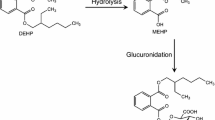Summary
The radioactivity in the blood, bile, and contents from different parts of the gastro-intestinal tract was estimated for different time intervals up to 24 h after 3H-SDMH injection to rats. 65% of the radioactivity was excreted in the urine. Of the total quantity of radioactive products entering the intestine, 96% is brought with bile and only 4% from the circulation through the wall of the intestine. This latter small amount of SDMH metabolites plays a leading role in the genesis of intestinal tumours. This conclusion was proved by the observation that the intestinal tumours developed in different isolated segments of the gut where the entry of bile was excluded and by published data indicating that SDMH is excreted unchanged in the bile.
It was shown that the carcinogenic effect depends upon the dose schedule of carcinogen treatment, probably, due to the changes in the SDMH metabolism. The optimal conditions for induction of intestinal tumours occur after administration of SDMH in a dose of 21 mg/kg body weight once a week. Hypothetic SDMH metabolic pathways leading to tumour production have been considered in the light of available experimental data.
Zusammenfassung
Die Radioaktivität des Blutes, der Galle und des Inhalts verschiedener Teile des gastrointestinalen Trakts wurde für verschiedene Zeitintervalle bis zu 24 Std nach Injektion von 3H-SDMH abgeschätzt. 65% der Radioaktivität wurde im Harn ausgeschieden. Von den in das Intestinum eintretenden radioaktiven Produkten entstammen 96% der Galle und nur 4% der Zirkulation durch die Wand des Intestinums. Diese letztere, kleine Menge von SDMH Metaboliten spielt eine wichtige Rolle für die Genese der Intestinaltumoren. Dieser Schluß wurde durch die Beobachtung bewiesen, daß sich die intestinalen Tumoren in verschiedenen isolierten Segmenten des Darms entwickelten, für die der Zufluß der Galle ausgeschlossen war, sowie durch Literaturdaten, die zeigen, daß SDMH unverändert in die Galle ausgeschieden wird.
Es wurde gezeigt, daß der carcinogene Effekt vom Dosierungsschema der Carcinogenbehandlung abhängt. Dies ist wahrscheinlich auf Veränderungen des SDMH-Stoffwechsels zurückzuführen; die optimalen Bedingungen zur Induktion intestinaler Tumoren sind nach einmal wöchentlicher Gabe von 21 mg SDMH/kg Körpergewicht gegeben. Hypothetische Stoffwechselwege für SDMH, die zur Tumorbildung führen, werden anhand zugänglicher experimenteller Daten diskutiert.
Similar content being viewed by others
References
Barz,P.: Physikalisch-chemische Untersuchungen am 1.2-Dimethylhydrazin und seinen Metallkomplexen im Hinblick auf das Krebsproblem. Dokt. Naturwiss. Dissertation, Friedberg, 1971
Burdette,W.J.: Colorectal carcinogenesis. Cancer 34, 872–877 (1974)
Doll,R., Muir,C., Waterhouse,J. (Eds.): Cancer Incidence in Five Continents, Vol.2. Geneva: 1970
Druckrey,H.: Production of colonic carcinomas by 1,2-dialkylhydrazine and azoxyalkanes. In: W.J.Burdette (Ed.): Carcinoma of the colon and antecendent epithelium, pp. 267–279. Springfield: C.C.Thomas 1970
Druckrey,H.: Organospecific carcinogenesis in the digestive tract. In: Nakahara,W., Takayama,S., Sugimura,T., Odashima,S. (Eds.): Topics in chemical carcinogenesis. 2nd International Symposium of the Princess Takamatsu Cancer Res. Fund. Tokyo: University of Tokyo Press 1972
Druckrey,H., Preussmann,R., Matzkies,F., Ivankovic,S.: Selektive Erzeugung von Darmkrebs bei Ratten durch 1,2-Dimethylhydrazin. Naturwissenschaften 54, 285–286 (1967)
Hawks,A., Magee,P.N.: The alkylation of nucleic acids of rat and mouse in vivo by the carcinogen 1,2-dimethylhydrazine. Brit. J. Cancer 30, 440–447 (1974)
Hawks,A., Swann,P.F., Magee,P.N.: Probable methylation of nucleic acids of mouse colon by 1,2-dimethylhydrazine in vivo. Biochem. Pharmacol. 21, 432–433 (1972)
IARC, Monographs on the evaluation of the carcinogenic risk of chemicals to man, Vol.. 4, p. 153–157. Lyon: Intern. Agency for Research on Cancer 1974
Kleihues,P., Margison,G.P.: Carcinogenicity of N-methyl-N-nitrosourea: possible role of excision repair of O6-methylguanine from DNA. J. nat. Cancer Inst. 53, 1839–1841 (1974)
Pozharisski,K.M.: Tumours of the intestines. In: Turusov,V.S. (Ed.): Pathology of tumours in laboratory animals. Vol. 1, part 1, pp. 119–140. IARC Scientific Publication No 5, Lyon 1973a
Pozharisski,K.M.: The influence of the bowel segment exclusion on development of cancer there. Vestn. Khir. 111 (8), 52–57 (1973b) (In Russian)
Pozharisski,K.M.: Morphology and morphogenesis of experimental epithelial tumors of the intestine. J. nat. Cancer Inst. 54, 1115–1135 (1975)
Pozharisski,K.M., Anisimov,V.N.: The role of the endocrine system in the development of experimental intestinal tumours. Path. Physiol. No 1, 47–50 (1975) (In Russian)
Pozharisski,K.M., Dushkin,V.A., Podoprigora,G.I.: On the role of microbial flora in the induction of intestinal tumours in rats. Bull. exp. Biol. Med. 78 (10), 81–84 (1974) (In Russian)
Pozharisski,K.M., Kapustin,Yu.M., Likhachev,A.J., Shaposhnikov,J.D.: The mechanism of carcinogenic action of 1,2-dimethylhydrazine (SDMH) in rats. Int. J. Cancer 15, 673–683 (1975a)
Pozharisski,K.M., Klimashevski,V.F., Gushchin,V.A.: The peculiarities of enterocyte population kinetics in different bowel as a factor responsible for tumour development. Dokl. AN SSSR 220 (1), 216–219 (1975b) (In Russian)
Preussmann,R., Druckrey,H., Ivankovic,S., Hodenberh,V.A.: Chemical structure and carcinogenicity of aliphatic hydrazo, azo, and azoxy compounds and triazenes, potential in vivo alkylating agents. Ann. N.Y. Acad. Sci. 163, 697–716 (1969)
Prough,R.A.: The N-oxidation of alkylhydrazines catalyzed by the microsomal mixed-function amine oxidase. Arch. Biochem. Biophys. 158, 442–444 (1973)
Reddy,B.S., Weisburger,J.H., Narisawa,T., Wynder,E.L.: Colon carcinogenesis in germ-free rats with 1,2-dimethylhydrazine and N-methyl-N′-nitro-N-nitrosoguanidine. Cancer Res. 34, 2368–2372 (1974)
Weisburger,J.H.: Colon carcinogens: their metabolism and mode of action. Cancer 28, 60–70 (1971)
Wittig,G.von, Wildner,G.P., Ziebarth,D.: Der Einfluß der Ingesta auf die Kanzerisierung des Rattendarms durch Dimethylhydrazin. Arch. Geschwulstforsch. 37, 105–115 (1971)
Author information
Authors and Affiliations
Rights and permissions
About this article
Cite this article
Pozharisski, K.M., Shaposhnikov, J.D., Petrov, A.S. et al. Distribution and carcinogenic action of 1,2-dimethylhydrazine (SDMH) in rats. Z. Krebsforsch. 87, 67–80 (1976). https://doi.org/10.1007/BF00285075
Received:
Accepted:
Issue Date:
DOI: https://doi.org/10.1007/BF00285075




